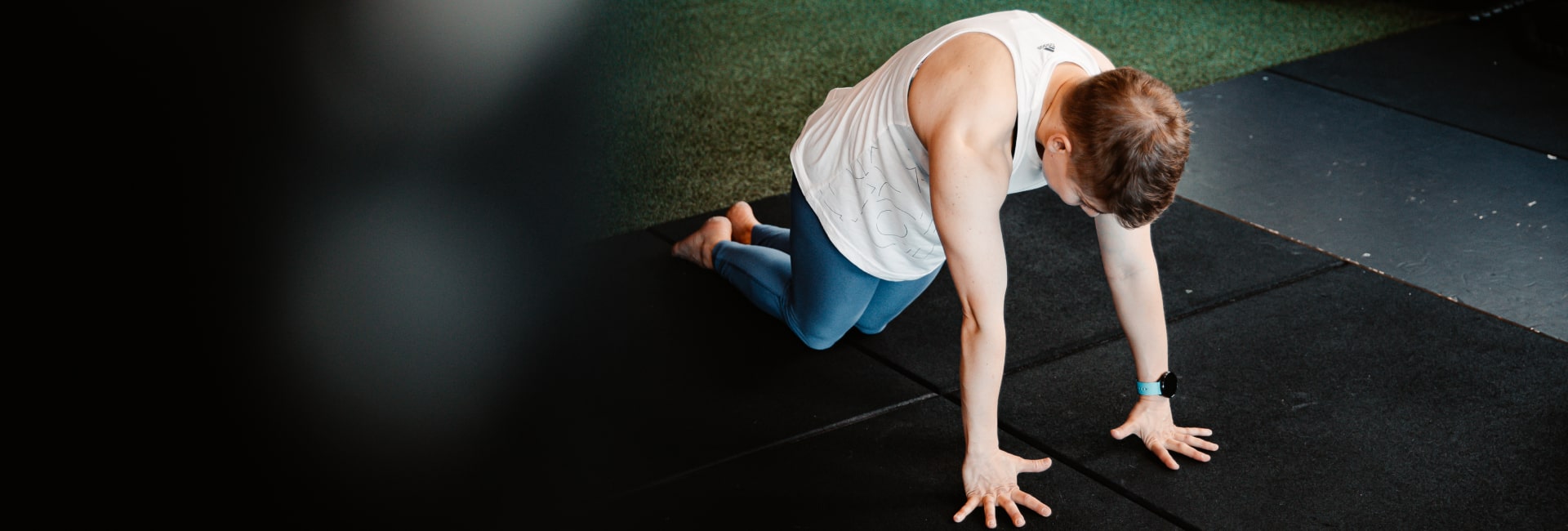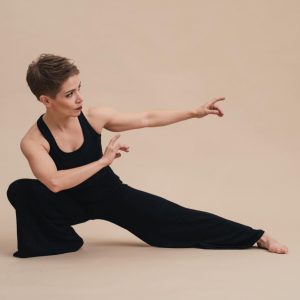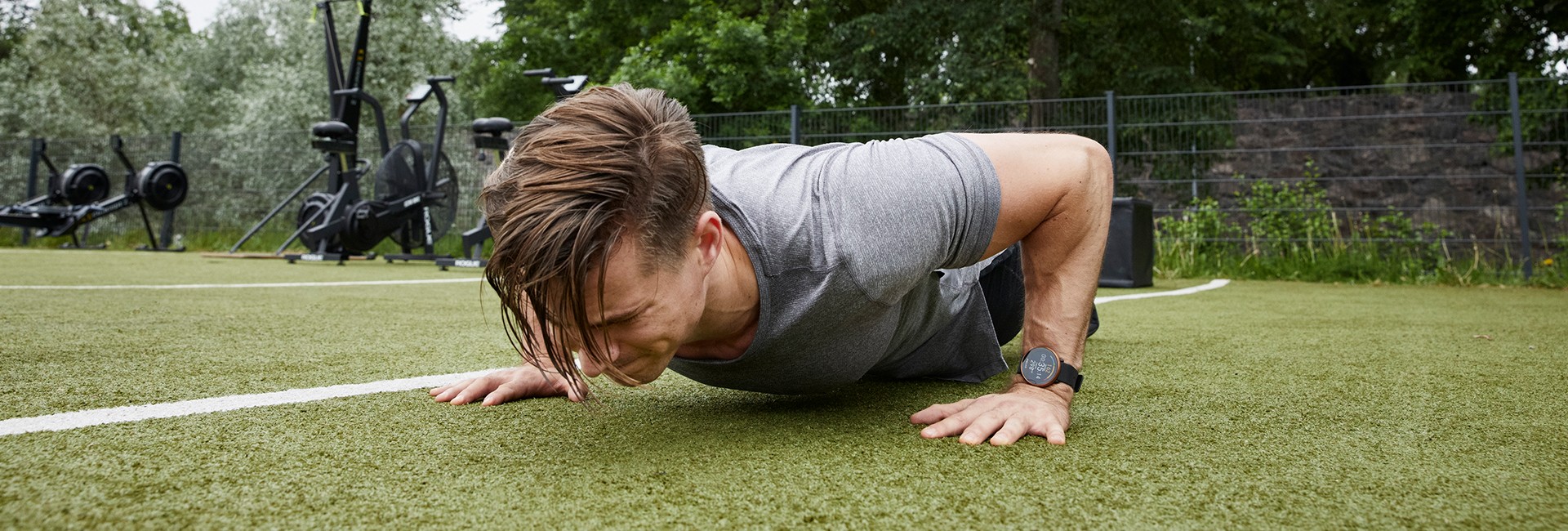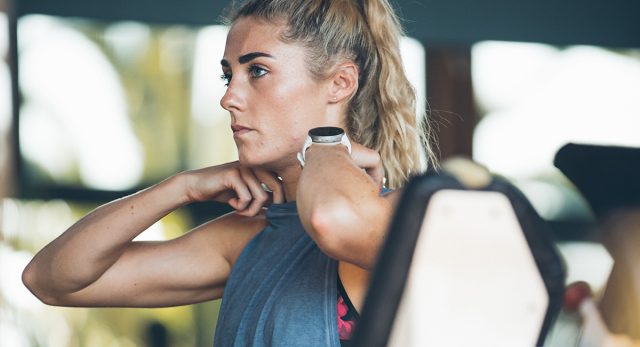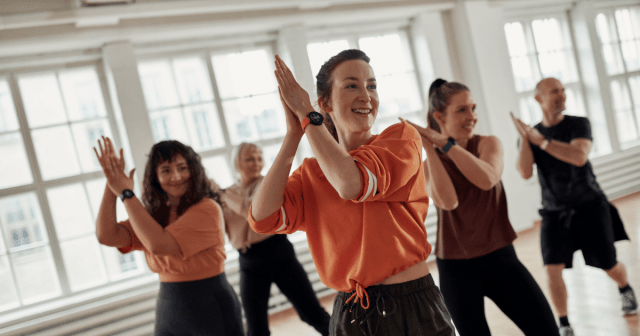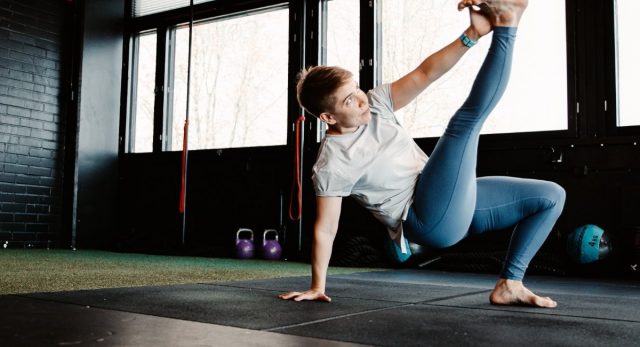Sometimes the gentlest exercises have the biggest impact.
When it comes to mobility, it’s easy to overlook these simple yet essential movements for something more strenuous. However, including these simple strength and flexibility exercises in your training plan will actually enhance your other workouts.
We asked Polar master trainer Anniina Ala-Mattinen to tell us exactly why are mobility exercises important for our overall fitness and showcase six movements to keep you limber.
(Scroll down for the full workout video and instructions)
What are the benefits of doing mobility exercises?
Your mobility is a combination of your strength and flexibility. So when you are more mobile, you will notice you are like a young branch on a tree: so flexible but still strong enough to bounce back easily.
Mobility exercises make us like a stick of bamboo – no matter what your age, you will be able to bend while also staying strong. Or perhaps like a rubber band: You’ll stretch and bounce back but never break.
Ensuring your body is mobile and flexible also makes you more adaptable and responsive. When your muscles are soft and limber, they can help to protect your joints and ligaments plus help enhance your coordination. This decreases the likelihood of injuring yourself, which we can all agree is a definite benefit.
Mobility exercises make us like a stick of bamboo – no matter what your age, you will be able to bend while also staying strong.
Mobility goes even deeper than this too. Your fascia is the connective tissue just beneath your skin, which acts like your nervous and circulatory system, sending messages around your body. It’s kind of like the glue that holds your system together, connecting your limbs and your brain in a comprehensive network.
So, when you do mobility exercises, you are enhancing your entire this entire network of information transmitting around your body. This means you will have a greater sense of how you move, enhancing your balance, alignment and metabolism.
When should we include mobility exercises in our training?
You can do them at any time. You can include them as a regular session on your training plan or as an add-on to your usual workouts.
Try mobility exercises before a hard training session. They will wake-up your nervous system and enhance your range of motion.
They also work as a great cool-down after a workout as they help your blood to keep circulating while gently returning your body temperature and heart rate to pre-exercise levels.
Mobility exercises are also an excellent form of active recovery, especially you’re feeling tired. These gentle movements aren’t that taxing for your energy levels but you will still reap the benefits.
WHAT KIND OF EQUIPMENT DO YOU NEED TO DO THESE EXERCISES?
None. These are bodyweight exercises, so all you need is your body.
You can incorporate rubber bands, small weights, etc. into this workout if you like but it isn’t necessary for reaping the benefits.
Why are wrists and ankles featured so much in these mobility exercises?
Simply put: your wrists and ankles are the edges of your body.
Your feet and ankles are an incredibly complex part of your body. There are more bones and joints in one foot than in the rest of your body. This is because their main job is to ‘handle’ or carry the load of your body’s weight while also sensing the ground that you’re stepping on and adapting to it.
There are more bones and joints in one foot than in the rest of your body.
They spend all day taking your entire bodyweight, often on one side at a time, so your feet and ankles need a lot of support with mobility exercises. When this part of your body gets weak, it can affect your whole biomechanism, especially your knees and hips.
When it comes to our hands, strong fingers and wrists not only help us to lift and carry things, but they help to divide the weight effectively across both sides of our body. A lot of shoulder problems come because we don’t have enough strength and mobility in our wrists.
Why are our hips so key to mobility?
Your hips are the centre of your body. It’s the part that connects our back and legs, so if they don’t move effectively, we can’t walk. Your abs and glutes are tied to the hips as well, which protect your lower back. So all these muscles are connected. Your hips and their mobility affects everything.
EASY STRENGTH AND MOBILITY EXERCISES
Follow along with Anniina as she takes you through six simple mobility exercises that you can do anywhere, at any time.
Shoulder Circles
This exercise is good for mobilising and strengthening our muscles both inside and outside of our shoulder blades. Opening them up ensures our shoulders don’t get stiff.
- Slowly rotate your shoulders from front to back and from back to front.
- Push your palms against the floor.
- Complete five reps in each direction.
Wrist pain is a key sign of weakness in this part of your body, so it’s important to use your muscles with this basic wrist movement.
Wrist Push-Ups
Wrist pain is a key sign of weakness in this part of your body, so it’s important to use your muscles with this basic wrist movement. Work your forearm muscles as well as the front and back muscles in the wrist with this exercise, while stretching your palm and fingers as well.
- Place most of your weight on your hands and engage your core.
- Lift your wrists off the ground while keeping your fingers flat.
- Complete eight to 10 reps.
Ankle Extensions
This exercise helps stretch your ankles and open up your calf muscles. It’s great for stopping shin splints (a common running injury).
- Slowly lift your knees off the floor.
- You should feel a stretch, but no pain.
- Complete eight to 10 reps.
It also helps you to avoid plantar fasciitis, a very common strain injury in your foot.
Achilles Bounce
This exercise is good for opening your plantar fascia and feet muscles – stretching your toes and mobilising your Achilles. It also helps you to avoid plantar fasciitis, a very common strain injury in your foot.
- Keep your hands on the floor for support.
- Gently roll forward onto your toes and knees.
- Complete eight to 10 reps.
Hip Mobilization
This overall hip movement helps both your flexor and glutes. It massages and wakes up the nerves in your muscles, working your whole hip area.
- Shift your weight onto one foot while raising the opposite knee.
- Push your hip gently forward while flexing your core and glute.
- Complete five reps on each side.
Side Crunch
This mobility exercise works your core area, which helps you to have strength in that side of your body.
- From a kneeling side plank, lift and extend your top leg and arm.
- Turn this leg outward while aiming to touch your knee with your elbow.
- Complete five reps on each side.
If you liked this post, don’t forget to share so that others can find it, too.
Or give it a thumbs up!
I like this article
Please note that the information provided in the Polar Blog articles cannot replace individual advice from health professionals. Please consult your physician before starting a new fitness program.
